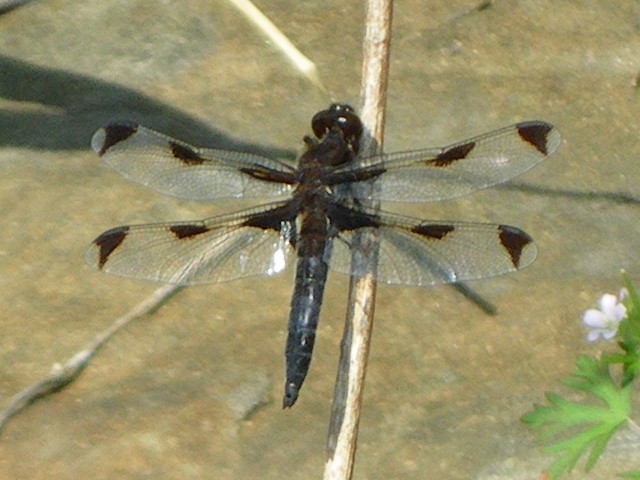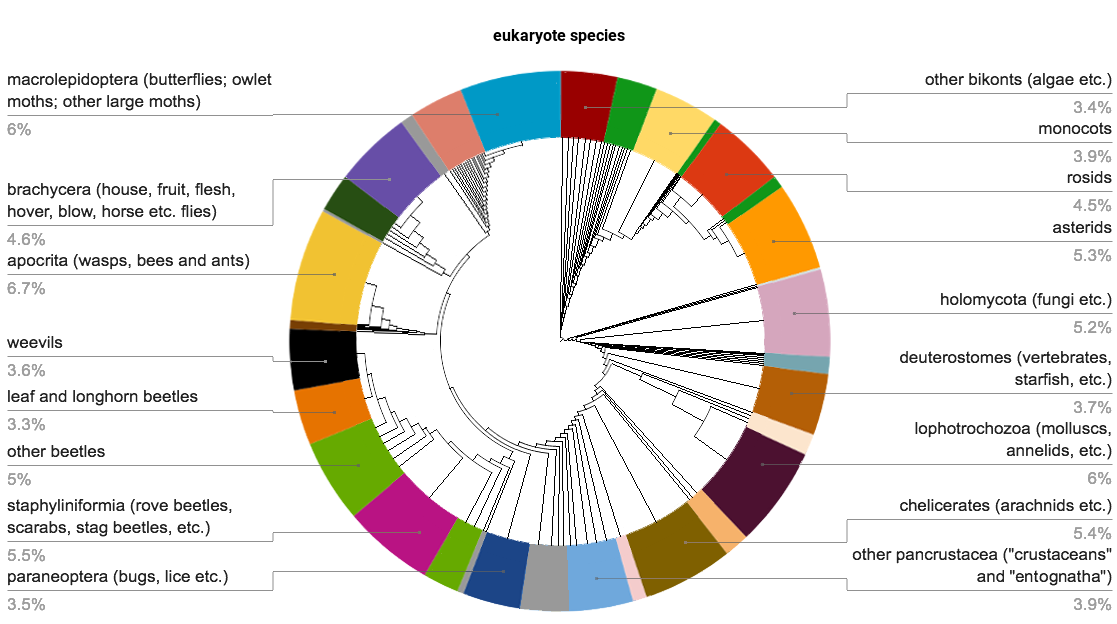|
Epitheca Bimaculata
''Epitheca bimaculata'', the Eurasian baskettail or two-spotted dragonfly, is a species of dragonfly. It was described by Toussaint de Charpentier in 1825 and initially placed in the genus ''Libellula''. It is the type species of the genus ''Epitheca''. Distribution Its habitat ranges from Western France to Japan and eastern Siberia. It has been found in Western Europe, but here it is "rare and seen very irregularly". It has also been found in Serbia, and Kaliningrad Oblast Kaliningrad Oblast () is the westernmost federal subjects of Russia, federal subject of the Russian Federation. It is a Enclave and exclave, semi-exclave on the Baltic Sea within the Baltic region of Prussia (region), Prussia, surrounded by Pola ..., Russia. Its occurrence in Hungary is "sporadic". It also is found in Ukraine. Biology It flies in May and June. Former subspecies Two subspecies were recognized, but they were synonymized in 2004: * ''Epitheca bimaculata sibirica'' * ''Epitheca bimaculata ... [...More Info...] [...Related Items...] OR: [Wikipedia] [Google] [Baidu] [Amazon] |
|
|
Toussaint De Charpentier
Toussaint von Charpentier (22 November 1779 – 4 March 1847) was a German geologist and entomologist. He was the author of ''Libellulinae europaeae descriptae e depictae'' (1840). Biography Toussaint von Charpentier was born in Freiberg, Saxony ( 22 November 1779 and died in Brieg 4 March 1847. Charpentier was the son of the Saxony geologist and "Berghauptmann" (head of the mining inspectorate), Johann Friedrich William von Charpentier and the brother of Johann von Charpentier. He studied geology and mining engineering at the Bergakademie Freiberg and continued his studies at the University of Leipzig. In the year 1802 Charpentier went to Prussia, where he accepted a place with the Silesia Oberbergamt (upper mining authority) in Breslau. Charpentier took over the management of Schweidnitz local mining authority in Schweidnitz until returning, in 1811, to the upper mining authority in Breslau. In 1828 his transfer to Dortmund as "Vizeberghauptmann" took place. 1830 he wa ... [...More Info...] [...Related Items...] OR: [Wikipedia] [Google] [Baidu] [Amazon] |
|
|
Species Description
A species description is a formal scientific description of a newly encountered species, typically articulated through a scientific publication. Its purpose is to provide a clear description of a new species of organism and explain how it differs from species that have been previously described or related species. For a species to be considered valid, a species description must follow established guidelines and naming conventions dictated by relevant nomenclature codes. These include the International Code of Zoological Nomenclature (ICZN) for animals, the International Code of Nomenclature for algae, fungi, and plants (ICN) for plants, and the International Committee on Taxonomy of Viruses (ICTV) for viruses. A species description often includes photographs or other illustrations of type material and information regarding where this material is deposited. The publication in which the species is described gives the new species a formal scientific name. Some 1.9 million ... [...More Info...] [...Related Items...] OR: [Wikipedia] [Google] [Baidu] [Amazon] |
|
 |
Libellula
''Libellula'' is a genus of dragonflies, called chasers (in English) or skimmers (in American), in the family Libellulidae. They are distributed throughout the temperate zone of the Northern Hemisphere. Many have showy wing patterns. Overview The taxa ''Ladona'' (corporals) and ''Plathemis'' (whitetails) have been considered as synonyms of ''Libellula'', subgenera, or separate genera by different authorities. Recent phylogenetic In biology, phylogenetics () is the study of the evolutionary history of life using observable characteristics of organisms (or genes), which is known as phylogenetic inference. It infers the relationship among organisms based on empirical dat ... analysis has supported their status as either subgenera or full genera. Species List of species. funet.fi [...More Info...] [...Related Items...] OR: [Wikipedia] [Google] [Baidu] [Amazon] |
|
Type Species
In International_Code_of_Zoological_Nomenclature, zoological nomenclature, a type species (''species typica'') is the species name with which the name of a genus or subgenus is considered to be permanently taxonomically associated, i.e., the species that contains the biological Type (biology), type wiktionary:en:specimen, specimen (or specimens). Article 67.1 A similar concept is used for suprageneric groups and called a type genus. In botanical nomenclature, these terms have no formal standing under the International Code of Nomenclature for algae, fungi, and plants, code of nomenclature, but are sometimes borrowed from zoological nomenclature. In botany, the type of a genus name is a specimen (or, rarely, an illustration) which is also the type of a species name. The species name with that type can also be referred to as the type of the genus name. Names of genus and family ranks, the various subdivisions of those ranks, and some higher-rank names based on genus names, have suc ... [...More Info...] [...Related Items...] OR: [Wikipedia] [Google] [Baidu] [Amazon] |
|
 |
Epitheca
''Epitheca'' is a genus of Odonata, dragonflies in the family (biology), family Corduliidae. They are commonly known as baskettails. Baskettails' distinction is the specially adapted, upturned abdomen tip of the females which allows them to carry their egg masses in a small, orange-tinted globule. Some authorities spin off the North American baskettails into two new genera, ''Epicordulia'' and ''Tetragoneuria'', but this has not gained widespread acceptance and most references place them under this genus. Species The genus contains the following species: Notes References * Genus ''Epitheca'' - Baskettails BugGuide Image of female baskettail sp. with egg mass on tip of tail Corduliidae Anisoptera genera Taxa named by Hermann Burmeister {{Corduliidae-stub ... [...More Info...] [...Related Items...] OR: [Wikipedia] [Google] [Baidu] [Amazon] |
|
Kaliningrad Oblast
Kaliningrad Oblast () is the westernmost federal subjects of Russia, federal subject of the Russian Federation. It is a Enclave and exclave, semi-exclave on the Baltic Sea within the Baltic region of Prussia (region), Prussia, surrounded by Poland to the south and Lithuania to the north and east. The largest city and administrative centre is the city of Kaliningrad. The port city of Baltiysk is Russia's only port on the Baltic Sea that remains ice-free in winter. Kaliningrad Oblast had a population of roughly one million in the 2021 Russian census. It has an area of . Various peoples, including Lithuanians, Germans, and Polish people, Poles, lived on the land which is now Kaliningrad. The territory was formerly the northern part of East Prussia. With the defeat of Nazi Germany in World War II, the territory was annexed to the Russian Soviet Federative Socialist Republic, Russian SFSR by the Soviet Union. Following the Aftermath of World War II, post-war migration and Flight and e ... [...More Info...] [...Related Items...] OR: [Wikipedia] [Google] [Baidu] [Amazon] |
|
|
Edmond De Sélys Longchamps
Baron Michel Edmond de Selys Longchamps (25 May 1813 – 11 December 1900) was a Belgium, Belgian Liberal Party (Belgium), Liberal Party politician and scientist. Selys Longchamps has been regarded as the founding figure of odonatology, the study of the dragonflies and damselflies. His wealth and influence enabled him to amass one of the finest collections of neuroptera insects and to describe many species from around the world. His collection is housed in the Royal Belgian Institute of Natural Sciences. Biography Selys was a wealthy aristocrat born in Paris to Michel Laurent de Selys Longchamps and Marie-Denise Gandolphe. He was educated at home by private tutors and never attended school or university. Nevertheless, he became known as the world's leading authority on Odonata as well as an expert on Neuroptera and European Orthoptera. He was also a leading ornithology, ornithologist. A Liberal Party representative in the Belgium, Belgian Parliament, he became Councillor for Ware ... [...More Info...] [...Related Items...] OR: [Wikipedia] [Google] [Baidu] [Amazon] |
|
 |
Taxa Named By Toussaint De Charpentier
In biology, a taxon (back-formation from ''taxonomy''; : taxa) is a group of one or more populations of an organism or organisms seen by taxonomists to form a unit. Although neither is required, a taxon is usually known by a particular name and given a particular ranking, especially if and when it is accepted or becomes established. It is very common, however, for taxonomists to remain at odds over what belongs to a taxon and the criteria used for inclusion, especially in the context of rank-based (" Linnaean") nomenclature (much less so under phylogenetic nomenclature). If a taxon is given a formal scientific name, its use is then governed by one of the nomenclature codes specifying which scientific name is correct for a particular grouping. Initial attempts at classifying and ordering organisms (plants and animals) were presumably set forth in prehistoric times by hunter-gatherers, as suggested by the fairly sophisticated folk taxonomies. Much later, Aristotle, and later still ... [...More Info...] [...Related Items...] OR: [Wikipedia] [Google] [Baidu] [Amazon] |
 |
Insects Described In 1825
Insects (from Latin ') are hexapod invertebrates of the class Insecta. They are the largest group within the arthropod phylum. Insects have a chitinous exoskeleton, a three-part body (head, thorax and abdomen), three pairs of jointed legs, compound eyes, and a pair of antennae. Insects are the most diverse group of animals, with more than a million described species; they represent more than half of all animal species. The insect nervous system consists of a brain and a ventral nerve cord. Most insects reproduce by laying eggs. Insects breathe air through a system of paired openings along their sides, connected to small tubes that take air directly to the tissues. The blood therefore does not carry oxygen; it is only partly contained in vessels, and some circulates in an open hemocoel. Insect vision is mainly through their compound eyes, with additional small ocelli. Many insects can hear, using tympanal organs, which may be on the legs or other parts of the body. The ... [...More Info...] [...Related Items...] OR: [Wikipedia] [Google] [Baidu] [Amazon] |
 |
Dragonflies Of Europe
A dragonfly is a flying insect belonging to the infraorder Anisoptera below the order Odonata. About 3,000 extant species of dragonflies are known. Most are tropical, with fewer species in temperate regions. Loss of wetland habitat threatens dragonfly populations around the world. Adult dragonflies are characterised by a pair of large, multifaceted, compound eyes, two pairs of strong, transparent wings, sometimes with coloured patches, and an elongated body. Many dragonflies have brilliant iridescent or metallic colours produced by structural coloration, making them conspicuous in flight. An adult dragonfly's compound eyes have nearly 24,000 ommatidia each. Dragonflies can be mistaken for the closely related damselflies, which make up the other odonatan infraorder ( Zygoptera) and are similar in body plan, though usually lighter in build; however, the wings of most dragonflies are held flat and away from the body, while damselflies hold their wings folded at rest, along or abo ... [...More Info...] [...Related Items...] OR: [Wikipedia] [Google] [Baidu] [Amazon] |
 |
Insects Of Russia
Insects (from Latin ') are hexapod invertebrates of the class Insecta. They are the largest group within the arthropod phylum. Insects have a chitinous exoskeleton, a three-part body (head, thorax and abdomen), three pairs of jointed legs, compound eyes, and a pair of antennae. Insects are the most diverse group of animals, with more than a million described species; they represent more than half of all animal species. The insect nervous system consists of a brain and a ventral nerve cord. Most insects reproduce by laying eggs. Insects breathe air through a system of paired openings along their sides, connected to small tubes that take air directly to the tissues. The blood therefore does not carry oxygen; it is only partly contained in vessels, and some circulates in an open hemocoel. Insect vision is mainly through their compound eyes, with additional small ocelli. Many insects can hear, using tympanal organs, which may be on the legs or other parts of the body. ... [...More Info...] [...Related Items...] OR: [Wikipedia] [Google] [Baidu] [Amazon] |